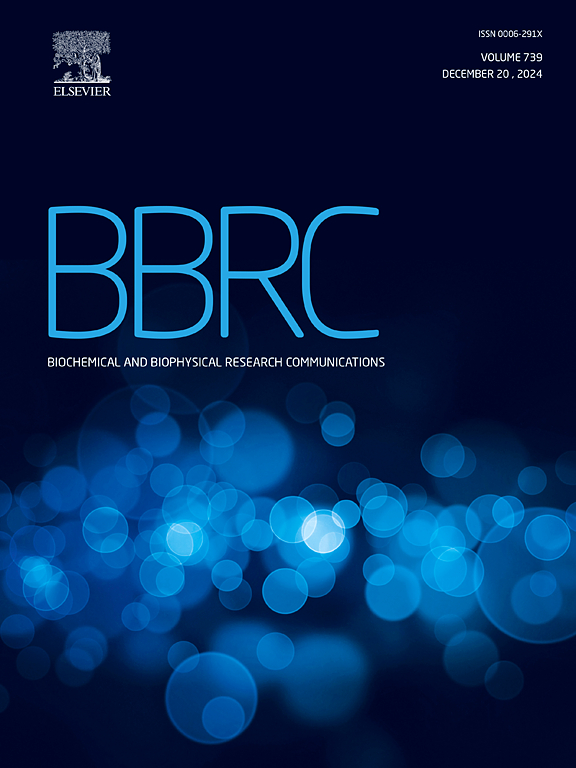New strokes to the portrait of inactivated actin
IF 2.5
3区 生物学
Q3 BIOCHEMISTRY & MOLECULAR BIOLOGY
Biochemical and biophysical research communications
Pub Date : 2024-11-28
DOI:10.1016/j.bbrc.2024.151089
引用次数: 0
Abstract
In addition to the well-known monomeric and polymeric forms of actin there is another unique thermodynamically stable state of this protein, called “inactivated actin” (I-actin). I-actin is formed at moderate concentration of a denaturant, release of Ca2+ ions and/or ATP, or after heating. This state is a monodisperse associate and it has the same spectral characteristics regardless of the method of preparation. The interest in I-actin arises from the discovery of similar-sized short oligomers of actin in the cell nucleus, which structurally differ from polymeric actin. In this work, we investigated the intramolecular mobility of I-actin using the time-resolved anisotropy method. Our findings indicate that its tryptophan residues participate in structural oscillations, although their correlation time is significantly longer than that of native actin. Using the dynamic light scattering, we demonstrated that I-actin obtained by heating possesses the same dimensions as I-actin in 1.8 M GdnHCl. Using the fluorescent probe ANS, it was shown that I-actin has a unique structure with hydrophobic pockets on the surface and tryptophan residues in the polar internal regions of the structure.
求助全文
约1分钟内获得全文
求助全文
来源期刊
CiteScore
6.10
自引率
0.00%
发文量
1400
审稿时长
14 days
期刊介绍:
Biochemical and Biophysical Research Communications is the premier international journal devoted to the very rapid dissemination of timely and significant experimental results in diverse fields of biological research. The development of the "Breakthroughs and Views" section brings the minireview format to the journal, and issues often contain collections of special interest manuscripts. BBRC is published weekly (52 issues/year).Research Areas now include: Biochemistry; biophysics; cell biology; developmental biology; immunology
; molecular biology; neurobiology; plant biology and proteomics

 求助内容:
求助内容: 应助结果提醒方式:
应助结果提醒方式:


